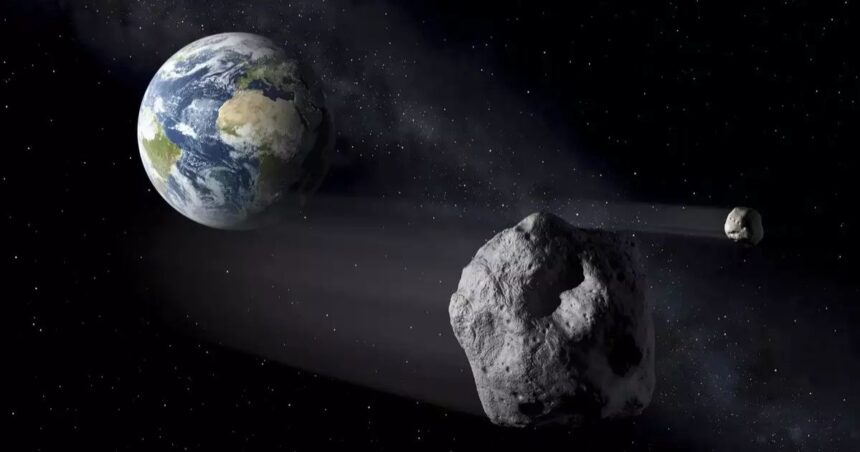NASA’s Jet Propulsion Laboratory (JPL) issued an alert about two asteroids heading towards Earth. These asteroids, named 2020 GE and 2024 RO11, are set to pass by our planet on September 24, 2024.
Asteroid 2020 GE: The Bus-Sized Rock
The first asteroid, 2020 GE, is relatively small. It measures about 26 feet in diameter, roughly the size of a bus. Despite its size, it will come quite close to Earth, passing at a distance of just 410,000 miles. This is closer than the average distance between the Earth and the Moon.
Asteroid 2024 RO11: The Airplane-Sized Giant
The second asteroid, 2024 RO11, is much larger. It measures around 120 feet in diameter, almost the size of an airplane. This asteroid will pass by Earth at a safe distance of approximately 4,580,000 miles. Although this distance is much greater than that of 2020 GE, it is still considered a close approach in astronomical terms.
NASA has reassured the public that both asteroids will pass by Earth safely. There is no threat of collision. These close approaches, however, provide valuable opportunities for scientists to study these celestial bodies. NASA’s JPL uses these events to gather data on the asteroids’ sizes, orbits, and compositions.
Asteroids are rocky bodies that orbit the Sun, just like planets. Most of them are found in the asteroid belt between Mars and Jupiter. They vary in size and shape. Some are as small as pebbles, while others are hundreds of miles in diameter. Studying asteroids helps scientists understand the early solar system. These space rocks are considered to be the building blocks of planets.
The Importance of Tracking Asteroids
Tracking asteroids is crucial for planetary defense. By monitoring their paths, scientists can predict their future positions. This helps in assessing any potential threat to Earth. NASA’s Planetary Defense Coordination Office (PDCO) is responsible for detecting and tracking near-Earth objects (NEOs). They work to identify any that might pose a hazard to our planet.
How Are Asteroids Detected?
Asteroids are detected using telescopes and radar. NASA’s JPL and other observatories around the world constantly scan the skies. They look for any new objects and track known ones. When a new asteroid is discovered, its orbit is calculated. This helps in predicting its future path and any potential close approaches to Earth.
During a close approach, scientists use radar to study the asteroid in detail. Radar observations can reveal the asteroid’s size, shape, rotation, and surface features. This information is crucial for understanding the asteroid’s composition and structure. It also helps in refining the asteroid’s orbit, making future predictions more accurate.
Close approaches of asteroids often generate public interest. Skywatchers and amateur astronomers look forward to these events. With the right equipment, some asteroids can be seen from Earth. NASA often provides information on how and when to observe these celestial events.




